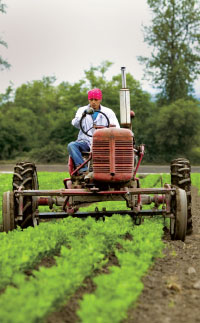Soil & Sea: reports from our producers
This article was originally published in November 2011

Washington apple growers are expecting to produce 129.6 million 40-pound boxes in 2011, down 2 percent from last year. This is an updated projection — last month we reported the apple industry was forecasting 106.3 million boxes.
Decent volumes of organic avocados out of Mexico and Chile means prices will come down from where they were during the summer and fall.
Walnut growers expect their harvest to fall short of last year’s record crop. This year’s yield has been predicted at 485,000 tons, slightly lower than last year’s 503,000 tons. The mild spring and summer weather that delayed the harvest also made for high-quality kernels. About 99 percent of the nation’s walnuts come from California.
California expects a record almond yield this year — 1.95 billion pounds, surpassing last year’s record 1.65 billion pounds. Early varieties of the nuts have been excellent quality due to adequate chill last winter.
The Asian pear crop is looking to have a strong year.
Alaskan salmon recently received the Responsible Fisheries Management Certification from the Global Trust Certification Committee. Ninety-six percent of U.S. wild salmon comes from Alaska.
Six new fisheries in the Americas have been certified and three re-certified sustainable by the Marine Stewardship Council, including a Pacific sardine fishery, the first anchovy fishery, first spiny dogfish fishery, and the B.C. pink salmon fishery.
